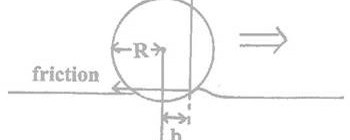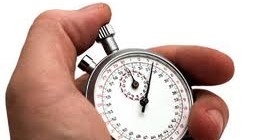I’ve been involved in AimPoint Green Reading now since February 2011. Mark Sweeney first introduced me to the technology with senior instructor Jamie Donaldson in Orlando. Though in Asia AimPoint and the techniques taught during the clinics are still relatively unknown to many golfers. This blog will highlight 7 common mistakes I see golfers make when reading greens, my hope is that I can continue to create awareness of the important part green reading plays in the putting game.
 1. When looking to improve any area of your golf game you must first become aware of the area that needs attention. For most golfers they start their green reading process either when they step onto the green or worse still when they’re over their ball getting ready to hit their putt. Begin your green reading process well before you get to the surface; remember that your eyes are your chief ally to scope the environment ahead of you. They are able to see small and large contours of the green from a distance vs. standing over your putt. You should have 80% of your green reading completed before you arrive at your ball.
1. When looking to improve any area of your golf game you must first become aware of the area that needs attention. For most golfers they start their green reading process either when they step onto the green or worse still when they’re over their ball getting ready to hit their putt. Begin your green reading process well before you get to the surface; remember that your eyes are your chief ally to scope the environment ahead of you. They are able to see small and large contours of the green from a distance vs. standing over your putt. You should have 80% of your green reading completed before you arrive at your ball.
2. I hear this time and time again from commentators, the ball breaks towards the water or the ball breaks toward the mountain. The reality is the ball will only be effected by just a few factors, these include gravities effect on the slope you’re putting accross. The amount of break will be affected by our angle to the slope so the greater the angle the greater the amount of break must be allowed. Also distance we are from the hole, this encompasses the speed the balls rolling at, stimp of the green, grain on the greens and uphill vs. downhill putts or simply put how much time the ball is spending on the green. So next time you’re playing don’t make the mistake of allowing for break towards something that isn’t really there.
3. This is still a common way of reading greens, looking from at both sides of the hole and I must admit I’ve made this mistake myself. The influence of slope beyond the hole really has no bearing on how the ball will move before it reaches the hole. If your unable to find the line from the side of the hole your ball is on, then there’s a good chance you haven’t yet refined your green reading skills. For the most part it will put you in a state of confusion. Too often I see students seeing two difference lines from front and behind the hole, what then?
4. This is very common mistake, many golfers still believe that when they see the line of a putt, (see blog and image below) that the Apex point of the putt (being the highest point before the ball breaks) is where they should actually aim. This couldn’t be further from the truth; the true AimPoint can be anywhere upwards of 2 to 3 times higher depending on the severity and consistency of the slope. When a putt is hit at the apex it will begin to break almost immediately, thus a large reason why many putts are missed to the low side.
5. A quick show of hands to see if you like to hit your short putts hard to take the break out of them? Research has shown that it’s impossible to completely take break out of a putt. Sure, you can minimize some of the break by hitting it solid, though by hitting a putt too firm you narrow your entry to the hole, this greatly increases your chance of lip outs. A good capture speed into the hole would see the ball rolling be 6-12” past the hole. In the 2011 season Luke Donald went 483 holes without a three putt, the largest single streak in PGATour history. Luke was 1 of just 5 players on TOUR with a perfect putting record inside 3 feet in 2011. Donald went a perfect 529 for 529 when putting inside 3 feet. The next time you get a chance to watch him on the greens take note of his pace as his ball approaches the hole, I would define his pace as comfortable holing speed maximizing the holes width every time.
6. Adjusting to different green speeds can be very challenging even on your local course. Green speeds can differ greatly from a weekend competition to a club championship when the green speeds tend to be running faster than normal. A common mistakes I see which leads to under reading of putts is when the increase in the speed of the green is not factored into the equation. Early I mentioned that stimp or speed of the greens is a major contributing factor to break of the putt, so the faster the greens the more relative break must be allowed.
7. Double breaking putts can be challenging to read, these will occur anywhere from a distance of 15 feet or more depending on your angle to the slope. When you find yourself on a double breaking putt don’t make the mistake and forget to allow for the first part. Many golfers believe because the ball is rolling a little faster during the first half of the putt vs. the second half then they should just ignore the break in the first half. This is a sure-fire way to under read your longer double breaking putts. Remember hitting a putt firm will minimize some of the break, though not all of it, so make sure to factor in both half’s of the putt.
If you make several or all of these green reading mistakes then the good news is your best putting days are well ahead of you. Identify which areas you feel you lack the most in and take on board the advice given.


























